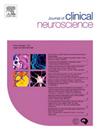Implementation of Integrated Patient-Reported outcome collection in outpatient cranial neurosurgical Practice: Results of qualitative interviews
IF 1.9
4区 医学
Q3 CLINICAL NEUROLOGY
引用次数: 0
Abstract
Objective
Patient Reported Outcome Measures (PROMs) quantify the patient’s quality of life and symptom burden. This study assesses the implementation of an automated PROM-capture system in an outpatient cranial neurosurgery clinic.
Methods
We conducted both quantitative and qualitative analyses of the implementation of a PROM tool in a single-center, dedicated brain tumor neurosurgery clinic. The primary measures were the PROMIS-10 and FACT-Br. The primary outcome of interest was PROM tool completion. For qualitative analysis, patients and providers were queried over a 6-month period to participate in a phone interview on their PROM tool experience.
Results
2,211 patients completed the PROM tool. The quantitative analysis found that white race (OR 1.42, 95% CI 1.21 – 1.68), being of non-Hispanic ethnicity (OR 1.20, 95% CI 1.06 – 1.37), or having private insurance (OR 1.28, 95% CI 1.08 – 1.53) were all associated with higher odds of PROM tool completion. Having an inactive patient portal – My Health At Vanderbilt (MHAV [OR 0.62, 95% CI 0.42 – 0.90]), or appointment providers were associated with decreased odds of PROM tool completion. In-person visits for new patients or for follow-up care were less likely to complete PROM tools as compared to telehealth. Fifteen patients and two providers participated in the phone interview, and the demographics of this group matched the overall cohort. Both patients and providers felt the PROM tool was pertinent, beneficial to patient care, and focused communication between the patient and provider.
Conclusions
This implementation study identified several barriers to developing an automated PROM-collection system in an outpatient cranial neurosurgery practice. These findings have been used to refine this system at our institution and may inform similar implementations elsewhere.
求助全文
约1分钟内获得全文
求助全文
来源期刊

Journal of Clinical Neuroscience
医学-临床神经学
CiteScore
4.50
自引率
0.00%
发文量
402
审稿时长
40 days
期刊介绍:
This International journal, Journal of Clinical Neuroscience, publishes articles on clinical neurosurgery and neurology and the related neurosciences such as neuro-pathology, neuro-radiology, neuro-ophthalmology and neuro-physiology.
The journal has a broad International perspective, and emphasises the advances occurring in Asia, the Pacific Rim region, Europe and North America. The Journal acts as a focus for publication of major clinical and laboratory research, as well as publishing solicited manuscripts on specific subjects from experts, case reports and other information of interest to clinicians working in the clinical neurosciences.
 求助内容:
求助内容: 应助结果提醒方式:
应助结果提醒方式:


